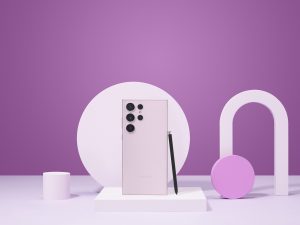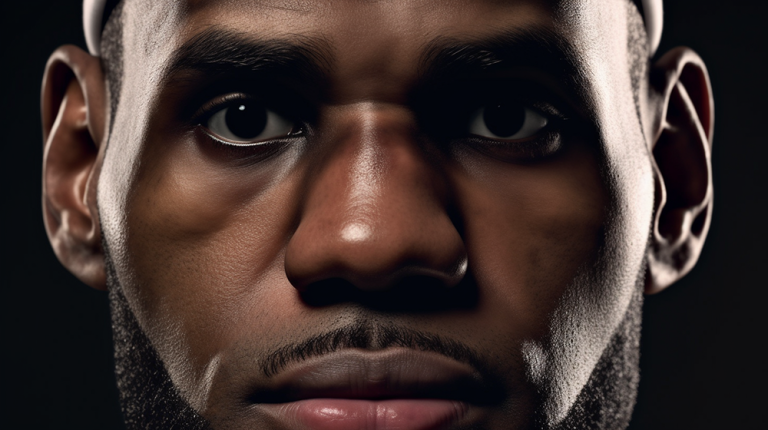What the competition offers
Sony and Microsoft find themselves in a bit of an odd position right now in terms of convincing their customers that they need a new machine. Firstly, diminishing returns on the advancement of graphics technology means there will not be such a defined leap between last gen and this one as there was between PS2 and PS3.
Secondly there’s the problem of services. Most the innovation and appeal of current-gen consoles has been in their services, media and social integration. Xbox 360 in particular has become a bona fide part of many people’s lounge rooms, serving up television, sport and movies on demand as well as offering a full complement of web and social services plus all manner of games delivered digitally. That can’t really be improved through new hardware. In fact it could be argued that the vast majority of new customers seen in last gen’s games boom were attracted by features that don’t need iteration, be that ESPN on Xbox 360 or Wii Fit on Wii.
People who bought a new console primarily for those things will not need a new one, no matter what’s offered. So what can Microsoft and Sony offer that will genuinely move units?
Well first of all I think they’ll move a lot less units than everybody’s expecting, at least at first. Just like with PS2, the old consoles will undoubtedly be around and actively supported for many years after the new consoles launch, and with so many people so comfy with their 360s it could be a while before critical mass. Wii U has been taking a lot of flak for its slow rate of sale, but I wouldn’t be surprised to see a similar phenomenon when the other two launch.
That said, Sony has put their flag in the ground and showed off parts of their new system, declaring unequivocally that the PlayStation 4 will take the focus off media and connectivity and put it squarely back on games. This is a smart move, since as I mentioned anybody not interested solely in games is likely to stick with the older hardware. Sony’s thrown a ton of technical innovation and smarts at PlayStation 4.
Its x86 processor and PC-like build will mean developers can easily use it as a lead console or port over from virtually anything to PlayStation 4. They’re also supporting self-publishing for indies. The cloud will play a big role too, although I do sense a great deal of skepticism in the company’s ability to pull off full-game streaming to the extent they claim they will. All in all, Sony is making a clear power-play not just to PS3 customers but to all gamers.

Much is yet to be seen of the PlayStation 4, and virtually all is yet to be seen of the next Xbox, but there are some features that are no-brainers. A more app-store-like online service is obligatory, for example. Nintendo made big claims about this before the launch of Wii U too, saying indies would get full support and set their own prices. The eShop is coming along but Ninty will be in trouble if either of the other two have an online store teeming at launch and ready to release handfuls of smaller titles every week. Sony recently announced that all PS4 games would be available digitally, which is another similarity with Wii U, although with some PlayStation 4 games clocking in at north of 60GB in size, that may not be much of an advantage.
Subscription and loyalty services will also play a part. PlayStation Plus has become a huge hit and will continue on PS4. Microsoft would be smart to drop the pay-for-online model and adopt a similar loyalty program. Either way free-to-play will largely replace game demos and trials, and social connectivity will still play a huge part of both consoles, so each will be looking to build a dedicated consumer base.
In all it’s fair to say that Nintendo had its finger on the pulse of what would matter this generation when they designed Wii U, and it absolutely has the potential to compete directly with the two upcoming consoles in many respects. It would appear that Nintendo has failed to live up to that potential somewhat in the early days, but then Nintendo doesn’t exactly colour inside the lines very often, and their social-friendly infrastructure and indie-ready online service is liable to kick off at any time. The most important thing to note here is that Nintendo does not intend to compete with the other two console directly as they compete with each other, however have the ability to successful ensured they appeal to some customers who might only want one console.
Could the new consoles improve Wii U’s fortunes?
It’s well know that stimulation within an industry can work out well for companies across the board. For example the release of a new iPad might result in an increase in interest toward Samsung tablets. Could the release of two new video game consoles result in an increase in Wii U sales?
On one hand the case of iPad vs Android is very different indeed to PlayStation vs Xbox vs Wii U. Nintendo is not seeking to provide an alternative to the other two beefier consoles. As Shigeru Miyamoto once said, the company wants to avoid the industry “having only ferocious dinosaurs. They might fight and hasten their own extinction”. Nintendo envisions a market in which the decision to purchase a Wii U is completely separate from the decision to purchase a PlayStation 4 or next-generation Xbox.
On the other hand, the consoles do all sit next to each other on the department store shelves, they do all offer a broadly similar experience and they do compete for mindshare and the almighty consumer dollar.
Directly following Sony’s PlayStation 4 presentation last week, some analysts were seen to point out a strange happening in the stock prices of Sony and Nintendo. The immediate reaction was that Sony Japan and Sony US dropped in value, while Nintendo Japan and Nintendo US rose in value. The most popular explanation for this is that stockholders were underwhelmed by Sony’s showing and so their confidence in Nintendo’s ability to stay competitive has been bolstered. I personally think something a little different is at play, and I reject the notion that this movement in stocks is even very weird at all. Take a look at this chart comparing some key milestones in the games industry and the simplified movement of stock for Sony and Nintendo.
The fact is stock will often drop following a major announcement or release, mainly because stock is usually building up in expectation in the weeks and months before the event (in this case Sony’s US stocks had rocketed a decent 30% in the two months prior to the announcement) and so a small downward adjustment directly afterward makes perfect sense.
But what of the upward swing for the opponent companies? Why did Sony gain following Nintendo’s Wii remote demo during TGS 2005? And why did Nintendo rise just recently after the PS4 event?
Put simply, people will always give more value to an unknown quantity than they will to a known one. When Nintendo’s Wii U is the only new console out and can only be compared to spectral, exciting, mysterious future consoles, it’s natural to be a little down on Nintendo’s machine. However once Sony’s PS4 starts to take physical shape the effect will begin to reverse itself. Once Sony and Microsoft have both released their consoles and Wii U is no longer solely compared to imaginary machines of mythical proportions that the consoles themselves will very likely not attain, I think we’re likely to see the company stock and people’s opinions of the consoles level out.
5 short-term predictions
So, having said all that, what will the next few months of next-gen fever bring, and what will it mean for Wii U?
- The next Xbox will come bundled with a new Kinect and be fundamentally designed to stream to SmartGlass apps on smartphones and tablets. This will mean all three consoles have motion control, off-TV play and asynchronous local multiplayer capabilities.
- Wii U will launch its virtual console once the period of 30 cent introductory games is completed, and by the holiday season there will be a decent library of classic games and an entire eShop subsection of indie games. This will be a conscious attempt to combat the digital offerings of the two incoming systems.
- As third-parties spend more time with the Wii U dev kits more and more cross-platform games will arrive for the system, and while the two new consoles will be more powerful than Wii U it will become clear that isn’t as big a deal as it was for Wii vs 360 and PS3.
- The next Xbox will not be as game-focused as Wii U and Ps4, and will suffer initially as a result.
- Once both new consoles are revealed we will see start to see a lot less gloom towards Wii U.
Be sure to make your own predictions in the comments about how the upcoming console launches will affect Wii U.









